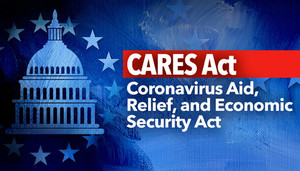Posted on Jul 7, 2020
Bob’s wife, Angie, was laid off from her job in retail when the pandemic began and stores closed their doors. To make matters worse, Bob became infected with coronavirus, was out of work for nearly a month while he recovered, and had his work hours reduced temporarily when he returned. With one child in high school and one starting college in the fall, money was tight. They debated whether they should withdraw funds from Bob’s retirement account to pay for their son’s upcoming college living expenses, given that Bob qualified to take a penalty-free distribution under the CARES Act. The question was, was it the right move for them to make?
The CARES Act, signed into law in March 2020, provides a unique opportunity for people impacted by COVID-19 to access their retirement funds up until December 31 of this year with less financial penalty than usual. Qualified individuals may withdraw up to $100,000 in coronavirus-related distributions without incurring the 10% premature distribution tax. While a distribution that is not repaid to the plan (or any plan that accepts rollovers) is still subject to ordinary income tax, this tax can be spread out over a period of three years.
For Bob and Angie, it was tempting to consider a withdrawal that would let them loosen the purse strings a bit. The pros? They could resume their former standard of living while Angie looked for a new job. Their son wouldn’t be under as much pressure to work part-time when he started college. The cons? With the daily volatility of the stock market, Bob’s portfolio had already taken a hit. Cashing out some of his stocks meant taking a loss and missing out on any market upturns in the future. Bob would lose the opportunity to earn compound returns on his current portfolio and possibly set back his retirement goals by several years. Ultimately after taking a long, hard look at their financial picture, Bob and Angie decided a distribution would only be a last resort.
Every family’s financial situation is different, but it’s important to weigh the pros and cons of a COVID-related distribution. Is this a true financial emergency? Are there other options available, such as a personal loan, cash through a 0 % APR credit card, or a home equity loan? Are there ways to increase income through a side job? There may be situations when a withdrawal is the right course of action – such as when there is no other way to meet basic needs or avoid eviction or foreclosure.
This material is provided for informational purposes only, and is not intended as authoritative guidance, legal advice, or assurance of compliance with state and federal regulations.
Back to Blogs Helpful Resource Links
